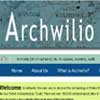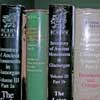Historic Environment Record
The official register of archaeological sites in Southeast Wales

Historic Environment Record
The Glamorgan-Gwent Archaeological Trust's Historic Environment Record (HER) is the official register of archaeological sites in Southeast Wales. Currently we hold about 25,000 records of archaeological and historical interest covering the twelve unitary authorities.
What information will I find in the Record?
It includes information on archaeological sites, buried remains, chance finds, excavations, significant landscape areas, buildings and standing monuments. The Historic Environment (Wales) Act 2016 introduced a duty on the Welsh Ministers to compile and keep up to date a historic environment record (HER) for each local authority area in Wales. This duty is being discharged through the HER services of the Welsh archaeological trusts. Though a memorandum of understanding between the RCAHMW and partner organizations – the four Welsh Archaeological Trusts, Cadw and NMGW, regularly exchange data to increase public access to archaeological information across Wales. Access is made available to data which is specified in Section 35 of the Historic Environment (Wales) Act 2016, which includes:
- Listed Buildings
- Scheduled Monuments
- Conservation Areas
- Registered Parks and Gardens
- Historic Landscapes
- Conflict Sites
- World Heritage Sites
- Historic Placenames
These records can be interrogated through a geographical information system and are supported by a collection of over 7,000 paper files containing more detailed information on particular sites including excavation and assessment reports, documents, plans, maps and photographs.
We also hold a small reference library of material relevant to the archaeology of Glamorgan and Gwent, which is available for consultation by HER users.
The information held within the HER is made available to all interested parties, such as personal or academic researchers, developers, local history groups, students and school children. More details can be found in our Accessing Information pages.
Our documentation at the bottom of the page aims to explain more about the content of the record, the services we provide as well as terms and conditions of access and guidelines for the submission of data with us.






